Wednesday 2 October 2019
Series REVIEW: Kamen Rider Kiva
How do you follow on from a smash hit like Kamen Rider Den-O? This is the exact problem Toei faced in 2008, when the time-travelling train series was about to make its final stop (that is until the deluge of sequel films of course). Their answer was to go a little bit horror with Kamen Rider Kiva – bringing in veteran writer Toshiki Inoue (Kamen Rider Agito, Kamen Rider 555) once more to spearhead the series. The 48-episode series served as the ninth entry in the Heisei series (and 18th Kamen Rider series overall), starring actor Koji Seto in the lead role of Wataru Kurenai. Seto would go on to immediately reprise his role at the beginning of the following series, helping to set in motion the events of the world-hopping anniversary series Kamen Rider Decade.
Wataru Kurenai is a shy and anxious young man, largely isolated to his large home where he makes violins – hoping one day to create one as magnificent as his father's, the Bloody Rose. But there's also a secret side to Wataru's shut-in persona, drawing on power from the mystical Kivat Bat the Third to become Kamen Rider Kiva and battling against monstrous creatures known as Fangire.
Meanwhile 22 years earlier in 1986, Wataru's father – the arrogant and womanising Otoya Kurenai, has his own encounters with the Fangire. As Otoya's past affects Wataru's future, the pair ally themselves with the enigmatic Blue Sky Organisation – dedicated to fighting back against the Fangire with their own Rider system, IXA. But when the Fangire Queen takes a deeper interest in humanity, a chance encounter between her and Otoya will change the battle lines forever.
Den-O might have been over, but Toei weren't ready to completely let go of it just yet. If that wasn't clear from the Den-O/Kiva crossover film essentially being a Den-O film with a Kiva cameo, then it is from all the little carry overs Kiva has. The dual timeline structure is a more straightforward version of Den-O's own time travel story, while Kiva being possessed by a trio of monsters in his alternate forms is a clear attempt at repeating the Imagin's success. Whether these things ultimately harmed Kiva is up for debate, but they are worth keeping in mind when discussing the series' shortcomings. And there are many of them.
On paper the format is an interesting concept. Two interweaving stories set over two decades apart, with characters and events from the 1986 side carrying over to the present day. With Kiva already established as a Rider in the opening episode it's also a great way of delivering the revelations that come later in the story, and as Wataru begins to learn more about his heritage the audience gets to see this history unfold at the same time. Unfortunately the theory behind it is far more exciting than the execution, which largely comes down to how poorly Kiva's overarching story is handled. Every series should have some level of "show, don't tell" to it and some things are most certainly better when left open to interpretation, but Kamen Rider Kiva completely pushes its luck with it. Numerous plot points need to just be taken at face value, and many of the characters only exist to serve in the moment rather than being fleshed out with interesting backstories. The structure also has the knock-on effect of making the Blue Sky Organisation of 1986 essentially useless, since nearly all of the Fangire they fight survive to be subsequently defeated by Kiva.
Romance also plays a huge part in Kamen Rider Kiva, with the various love triangles and their consequences being the main crux of the story and the catalyst for almost every major event. Though their inclusion does tie in rather nicely with the show’s gothic horror motif, it does sometimes feel like Inoue was preoccupied with the drama element to the story more so than ever.
Additionally if it wasn't already clear in Faiz, Toshiki Inoue does not like toys. Admittedly Kamen Rider Kiva was still early days into the franchise becoming the collectible-driven juggernaut it is now, but it still came at a point where toy sales made a difference. But Inoue had a story and clearly didn't want the merchandise to deviate from it, so any new items will just turn up without any prior explanation or build up. In some cases, such as the Shoodoran or Buroon Booster motorcycle attachment, never to be seen again. For one-off toys it's not so bad, but it's happening for final forms - something that's usually a big moment of drama for the show, it becomes a problem.
It isn't just the format that fails Kiva though, it's also the handling of its main cast. Wataru's characterisation is wildly inconsistent, going from a socially awkward shut-in one minute to skilled fighter the next. In another universe the huge disconnect between Wataru Kurenai and Kamen Rider Kiva is actually a significant plot point, developing his anxiety in a more interesting way while at the same time expanding more on Wataru as a person. Here they just feel like two different characters a lot of the time, with Wataru's emotional state feeling like a source of comic relief even when he's at his lowest.
Otoya on the other hand is at least consistent, but like Kabuto's Tendou a character that believes themselves to be perfect can be a difficult pill to swallow. Even though others rightfully call him out on his obnoxious and often irritating demeanour, ultimately everyone falls in love with him – some figuratively, others literally. If you find it difficult to get behind that kind of character, then you will not have a good time with Otoya for the most part. But then him being alluringly perplexing is part of the charm in story, so perhaps the idea was for that to rub off on the audience as well.
The quality of the supporting cast is far more varied by comparison – some are immediately but fall short of their full potential, while others just simply "exist". Kamen Rider IXA plays a particularly interesting role in all of this, a tech-based Rider system in a series utilised by a variety of different users where the powers are largely magic and lineage based. While Keisuke Nago would undoubtedly be considered the quintessential IXA (with Otoya less so as the 1986 equivalent), no other series has depicted a Rider-system as a multi-user tool quite as succinctly as this.
Kamen Rider’s treatment of its female characters has been spotty at best, but none feel quite as wasted in potential as Yuri and Megumi Aso. A mother/daughter combo paralleling the Wataru/Otoya structure, the pair immediately make their presence known as strong and seemingly capable Fangire hunters even without the aid of a Rider system. Yuri especially, who at the very beginning is the backbone of the 1986 storyline. But as time goes on their general effectiveness seems to progressively lessen, becoming a side note to other parts of the plot or feeling like support to their male costars. Yuri manages to keep up a much stronger presence in the show than poor Megumi, but the development of her relationship with Otoya feels far too abrupt - progressing from one extreme to the other rather that developing naturally. But even when she’s at her most capable the men are largely viewing her as some prize to be won. Time and time again the series goes out of its way to prevent them from donning the IXA suit full-time, which is incredibly frustrating as they are the characters that deserve it the most. The few times they do get to wear it are incredibly satisfying and the culmination of their main story arcs, but that impact doesn’t justify sidelining them.
So instead 2008 has Keisuke Nago as its IXA - a bounty hunter with a very black and white sense of righteousness and an intense hatred of Kiva. Nago doesn’t have any proper connection to anyone else in the story, so backstory is largely non-existent. His stubborn personality does eventually wane of the course of the series, but again it just comes as big character changes rather than gradual development. Turning his animosity toward Kiva into nothing as soon as he discovers its Wataru doesn’t count when he’s still being his same stubborn self in every other aspect. The final few episodes do however do take Nago in an interesting direction, but sadly its not a lasting consequence and instead mainly serves to develop another out of the blue relationship.
Other relatively strong characters in the series include the Fangire queen Maya, a pivotal character to Otoya and Wataru. Deadly as she is beautiful, it’s her interest in Otoya that creates a bridge between humans and Fangire. A bridge which others, such as King, do not appreciate. Though he isn’t in it for very long, King makes an excellent villain in terms of being some ferocious force that brings all the opposing sides together. Another prominent character is Jiro, a mysterious man later revealed to be Galulu - the last of the Wolfen race. Though the backstory of his kind being slaughtered by Fangire isn’t especially interesting or developed, how he goes from being a fellow Blue Sky Organisation member and Otoya’s fierce rival in 1986 to Wataru’s spiritual guide of sorts is. Finally there’s Mio - Wataru’s own love interest with her own dark secret. Another big catalyst in the story, but lacks the same agency of Maya and is ultimately feels like a plot device more than an actual character.
As previously stated, other characters exist just to fill the void. Shizuka – Wataru's 14 year old friend and pseudo-mother figure, is a particularly egregious example of this. Initially she simply acts as someone for Wataru to interact with but immediately unnecessary more cast is introduced. The fact she doesn't know Wataru is Kiva yet is aware of Kivat is just another example of the show's baffling logic. Budding rock star Kengo's relevance is similarly cut short, disappearing as soon as he serves his purpose but then returning later on feeling like a completely different character. Examples aren't quite as obvious on the 1986 side, but it is a shame that while Jiro feels like a fully realised character his companions Ramon (Bashaa of the Merman race) and Riki (Doggo of Franken Race) do not. The trio may roughly share the same background, but it would have been nice to get some individual focus for these two so they didn't just feel like Jiro's entourage the entire time.
On a more positive note, things do dramatically improve in the latter third of the series – heralded by the arrival of Taiga/Kamen Rider Saga. Suddenly the story feels a lot tighter, as it begins to delve into the minutiae of Fangire society and the two time periods become more interwoven. Both Wataru and Otoya finally come into their own as characters, and with the exception of the borderline slapstick "here we go again" epilogue the series does manage to end on a somewhat satisfying note. For the main characters that is, because once the show is on strictly Fangire business its bad news for anyone else. Yuri is playing second fiddle to Maya, while supporting cast of 2008 completely lose direction. Kengo returns for an IXA storyline that serves no purpose for either him or Nago, while Megumi is barely an afterthought. But the worst offender of all is Blue Sky Organisation chairman Mamoru Shima, who up until this point has simply just "existed" within the story. Not only are his focus episodes then rushed through trying to garner undeserved emotion, but the story then immediately undoes their outcome. Though it's one fault in a rather long list, that especially highlights how Kiva's story feels like one where only the broad strokes were filled in and everything else was just made up as it went along.
What stings the most about this all being such inconsistent mess is that production-wise the show has a lot going for it. The costumes embrace the horror motif wholeheartedly, the juxtaposition between Kiva's ornate vampire motif and the white cleric-like IXA suit being an especially nice touch. The Fangires are similarly well thought out, balancing the predominantly black bodies with bursts of colour styled like stained glass mosaics. Regardless of their poor implementation into the stories gimmick elements such as the Fuestles and Castle Doran fit right in, and the sound direction of the series (both the score and insert tracks) is some of the best in all of Kamen Rider when it comes to capturing that series aesthetic. From an outside perspective Kiva looks incredibly appealing, which makes it all the more disheartening that the actual content can't support it.
Then of course the suit design doesn't come without its own problems either. Kiva's early forms are designed to mirror the movements of the monsters they represent, which makes for some really unique and varied choreography in the first half of the series. It's a well-known fact that the shape and weight of the Kiva suit was extremely taxing on Seiji Takaiwa, so when the more lightweight Emperor form was introduced it slowly shifted to becoming Kiva's default form. From a production standpoint it was absolutely the right move to make, but once again the narrative completely fails to capitalise on the change and make it feel natural to the story. Emperor form also adopts a more generic Kamen Rider-esque fighting style, and the loss of that monster choreography is a huge blow to Kiva's unique identity.
No Kamen Rider series is completely irredeemable. Even the very weakest shows have unique strengths that make them completely stand out from the others, creating a franchise that’s never short on variety and feels like it has something for everyone. Kamen Rider Kiva is a very difficult series to see those strengths in. The story is a mess of botched concepts, filled with characters that range from wildly inconsistent to utterly wasted. Even the visuals and overall aesthetic are plagued with problems, whether it come from the poor plotting or technical issues that could have been ironed out in a much smoother manner. There’s no right place to start watching Kamen Rider, but Kiva is definitely the wrong one.
Subscribe to:
Post Comments (Atom)



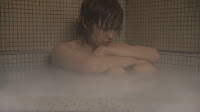

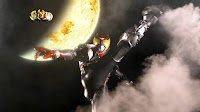
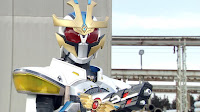
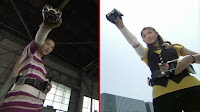
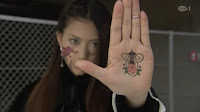
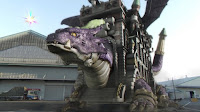

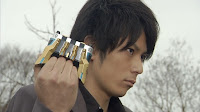
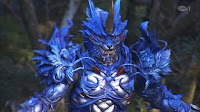





15 comments:
What´s your favorite Rider Monsters Design ? Mine are the Another Riders
What do you think of Toshiki Inoue ? I think he is a hit-and-miss writer: Jetman,Agito,Changerion are of my favorite Tokusatsu Shows while 555,Kiva,Gouraigan are terrible.
Wholeheartedly agree with so much of this. Kiva is not just my least favourite Kamen Rider series, but my least favourite work of fiction I've ever had the displeasure of experiencing. Every character is bad in a way that ranges from pointless to disgusting; the direction of the series is baffling and incomprehensible; the juxtaposition of the two timelines is so terribly done when it should be the core of the show...
Even other series I dislike like Kabuto or Ghost I can at least find some character or arc to latch onto, something to love. In those examples in particular, Gatack and Necrom stand out as extremely strong examples. But I couldn't find anything to enjoy in this series at all.
Kiva has its flaws, but is interesting none the less. I love Maya, and her Fangire form is gorgeous.
I mean, a lot of this can be said about Ex-Aid, but you don't see that having a 2/5
At first I was a little disapproving of Kiva. But from what I have seen from clips on Youtube, the show looked pretty good to me. The suits are absolutely gorgeous (Looking at you Dark Kiva), and it certainly stands a little taller than its successor, Decade. No wonder Kiva is always one of the remaining riders left standing in crossovers (e.g. Showa vs. Heisei, Super Hero Taisen). With both of these, it goes to show that Kiva deserves at least a little more credit in my opinion.
kiva is the series either u love it or hated it for me kiva is average to me some of it i enjoy some o it i fucking hate it
I would agree that Kiva deserves a 3/5, because there r moments I like or dislike.
Furthermore, my opinion about Toshiki Inoue, I like his Agito, 555 and Kiva series.
For Agito, I would say it was really great.
For 555, I would say it is very odd in some ways. Mostly I would say the moment where Orphnoch King arrives. 555 series is welcomed in Japan in many ways as I do respected it.
For Kiva, it may be silly to have a plot between two timelines and I don't hate it that much.
Apart from this, I dislike the way Toshiki Inoue write about Hibiki second half, which starts with episode 30 towards to end of the series. Because it is too terrible.
Likewise, his writing of Kamen Rider Zi-O's Kiva tribute arc (EP35-36), which is nothing related to Kiva's series is too terrible. Before this, his writing of RIDER TIME PART 2: Masked Rider Ryuki is really great even though he is not the main writer of Ryuki series.
Kiva to me gets a 3/5. The suits were beautiful, the action was interesting, the characters were likable and had interesting dynamics with each other. I also liked the converging story between 1986 and 2008. Loved Kiva Emperors arc.
What I didn't like
- Flight form
- Otoya being a player.
- Kamen Rider Arc
Overall, pretty solid to me.
“There’s no right place to start watching Kamen Rider, but Kiva is definitely the wrong one.“
You say that, but I started with this entry in particualr as my jumping on point and have been a Kamen Rider fan since...................... I suggest next time you choose your words carefully before you speak.
I'm glad you have continued to be a fan of Kamen Rider since Kiva. However that sentence was very much intended as hyperbole and I stand by it.
"You say that, but I started with this entry in particualr as my jumping on point and have been a Kamen Rider fan since...................... I suggest next time you choose your words carefully before you speak."
Here, allow me to choose some words, like opinion, subjectivity, and absolute wanker.
Surprisingly. my fist rider series was Kiva and I LOVED IT (especially Otoya and his actor). After watchung some other rider series and toku series, I've realized how PROBLEMATIC Kiva was,and watching some scenes just drive me crazy (the melodrama and the sexism are just TERRIBLE). And now kiva is the toku series I hate the most lol
for me Kiva is one of the best kamen riders i have watch
“I'm glad you have continued to be a fan of Kamen Rider since Kiva. However that sentence was very much intended as hyperbole and I stand by it.“
I’ll admit, i was way too harsh in what i said back then, and i do apologize for it, but I still stand by most of what i said. Kiva was my jumping on point for Kamen Rider, and after watching more Rider seasons since then, my opinions on Kiva still haven’t changed. What i take issue with is the fact that people say that Kiva is this “abomination to all man kind”. Look, i get opinions are opinions, but saying stuff like “this is my least favorite piece of fiction of all time”, again, opinions be opinions, but no. There are shows and movies far worse and are much more worthy of being given that title. Kiva is a series I’ve been very passionate about. And while yes, i am aware of allot of it’s problems, that doesn’t take away the fact that i still enjoy the series heavily to this day. But when people feel the need to bully and harass me, yes really, simply because i happened to like a show that they didn’t, and when people act like Kiva is a big PTSD triggering mess that no one should ever watch, that’s where i draw the line.
Again, i apologize for what i said back then, and i acknowledge your opinion even if i disagree with it, but in my opinion Kiva is not this giant mess that everyone keeps saying it is.
Post a Comment